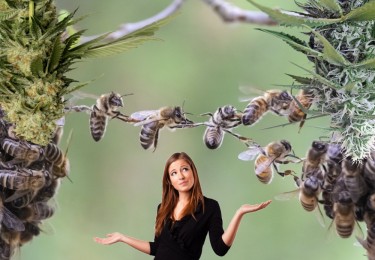
US Department of Agriculture publishes first hemp survey
It’s not news that the cannabis industry has seen unprecedented development in recent years. More and more countries are legalizing cannabis and it is increasingly accessible to consumers. The technology has also contributed to the growth of the cannabis industry, with better cultivation methods and DNA sequencing improving the quality of the cannabis on offer. There are also more types of cannabis products than ever for users to choose from. Given the overall growth of the industry, it is vital for country governments to put in place policies and infrastructures. This is what the US Department of Agriculture wants to achieve with its hemp survey.
The very first hemp survey in the United States of America
This hemp survey is the first of its kind in the United States and by no means coincidental. The Hemp Acreage and Production Survey, tagged, was set up by the Department of Agriculture after obtaining White House approval earlier this year. The survey was conducted for 20,500 hemp farmers. After approval was granted, the National Agricultural Statistics Service (NASS) announced the completion of the forms that will be mailed to the hemp farmers in August. Addressing the public, NASS issued a statement stating, “The Hemp Acreage and Production Survey gathers information on the acreage, yield, production, price and value of hemp in the United States.” “The program for domestic hemp production set out in the Agriculture Improvement Act of 2018 (Farm Act 2018) enables hemp to be grown under certain conditions. The Hemp Land and Production Survey will provide the necessary data about the hemp industry to support producers, regulators, state governments, processors and other key industry companies. ”The survey was sent out in October and initial responses are being received. The survey, which was sent out to the 20,500 hemp farmers, is due to be submitted by October 25th
What the survey includes
One might wonder what the survey entails and how it can help the cannabis industry. The survey is basically an examination of the production process of various hemp farmers. Questions asked include the primary and secondary uses of their hemp, the ways and means of growing it outdoors and the challenges they face, the acreage used for production, and the prices that producers bring in. Questions were also asked of various products such as CBD and other extracts, smokable hemp, and fiber and seeds. Other questions raised in the survey include the origins of seeds and clones, whether or not hemp farmers prune their crops by hand, and also whether they extract terpenes and cannabinoids from the plant.
Receiving the Hemp Cultivation and Production Survey
The Department of Agriculture has started receiving responses from hemp farmers across the country. For their part, the state agricultural authorities are working tirelessly to encourage local farmers to take part in the survey. The reason for this is not far-fetched, as many government responses point to a large hemp market. This will provide enough data for the Department of Agriculture to analyze the needs of the cannabis industry in such a condition. Additionally, states with many active hemp growers and a large hemp market will be most attractive to investors looking to get into both the hemp and sideline industries. Also, a state with a large market is best for grants and government support. Because of these benefits, states like Minnesota, Maryland, North Carolina, New Mexico, South Dakota, Washington State, Oregon, Texas, and Virginia have posted posts on various social media platforms and encouraged hemp farmers in their respective states to do the survey . This has made the survey widespread across the various states.
Regarding the importance of the survey, Kevin Barnes, acting administrator of the National Agricultural Statistics Service (NASS) stated that it will go a long way in creating a structure for the industry. “This first hemp survey will set a necessary benchmark and provide much-needed data for the hemp industry.” Barnes said, “The information gathered can help guide producers’ decisions about how to grow, harvest and sell hemp, and what types of hemp it is that they choose to produce. The resulting data will also promote better understanding of the hemp production landscape among regulators, producers, state and tribal governments, processors, and other key industry companies. ”He went on.
This underscores the importance of this survey and how the information obtained will go a long way in developing and regulating the industry.
The role of the U.S. Department of Agriculture in the hemp industry
The Ministry of Agriculture has been a mainstay in the hemp industry since legalizing the harvest in 2018 to this day. Hemp was legalized in the country through the Farm Bill. Information on the final regulation on hemp production was then published on January 19, 2021. This regulation came into force on March 22, 2021 and has been in force ever since. The rules are as follows:
-
A THC limit of 0.3 percent in a case where the product is less than one percent no longer counts as negligence.
-
Any product that does not meet the 0.3 percent THC requirement should be destroyed immediately. This destruction can be done by burying, burning, or composting.
-
Hemp testing should always be conducted by DEA-registered facilities starting December 31, 2022.
-
Hemp samples should be collected over a period of 30 days after harvest.
-
A performance-based sampling should be carried out.
-
Tribes should handle cases that come under their jurisdiction
diploma
This survey is a huge step in the right direction for the cannabis industry in the United States of America. The answers to the questions will help the Department of Agriculture make informed decisions that will benefit all players in the industry.
HEMP FARMERS IN AMERICA, READ MORE …

WHY CROSS POLLUTION COULD COST HEMP FARMERS MILLIONS!

Post a comment: